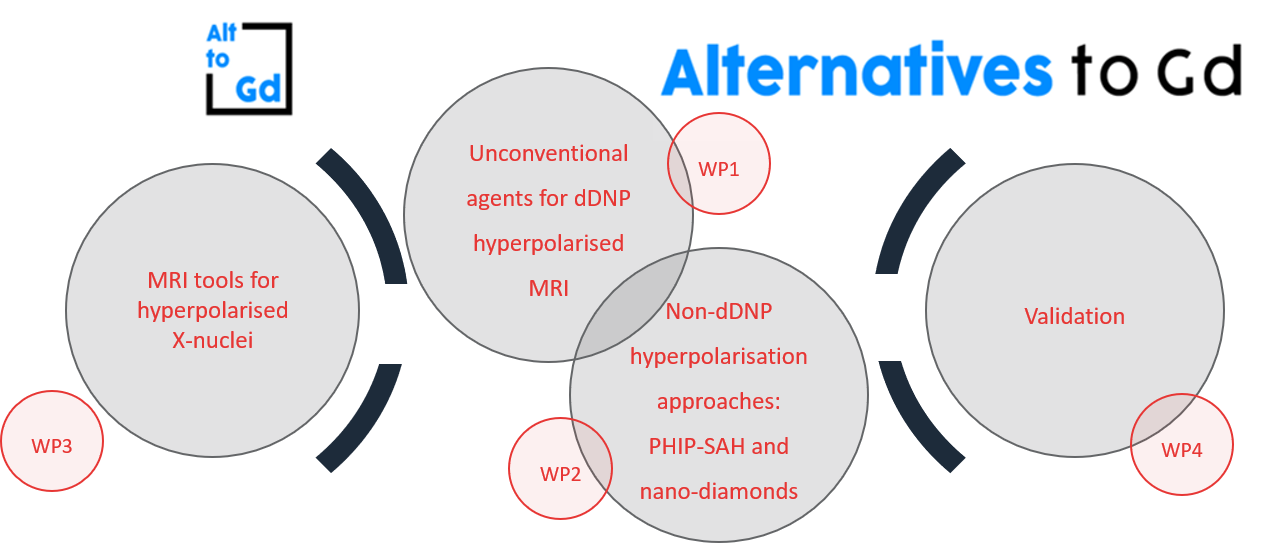Alternatives To Gadolinium
RS2D successfully applied and was selected for a FETOpen project (2019-2022) focusing on Hyperpolarized MR technologies and molecular probes as alternatives for conventional metal-containing contrasts agents. It’s a three-year collaborative research project that brings together highly experienced engineers, physicists, chemists and radiologists to develop a radically new and innovative contrasts agents for magnetic resonance imaging (MRI).
The specific aims AlternativesToGd are:
The use of hyperpolarised agents for perfusion imaging or tissue-retention imaging for diagnostic MRI is a new technology that does not exist today. We will lay the foundation for such a technology by providing the contrast agents, the means to increase their MR signal, and the routes for MR imaging of these hyperpolarised signals on clinical MRI scanners. Society will gain by having access to medical imaging that does not leave potentially toxic deposits in the bodies of children and adults undergoing MRI examinations. Our results also have the potential to access new markets for medical imaging and contrast media companies, whether established or young start-ups.
More info on the AlternativesToGd website.

